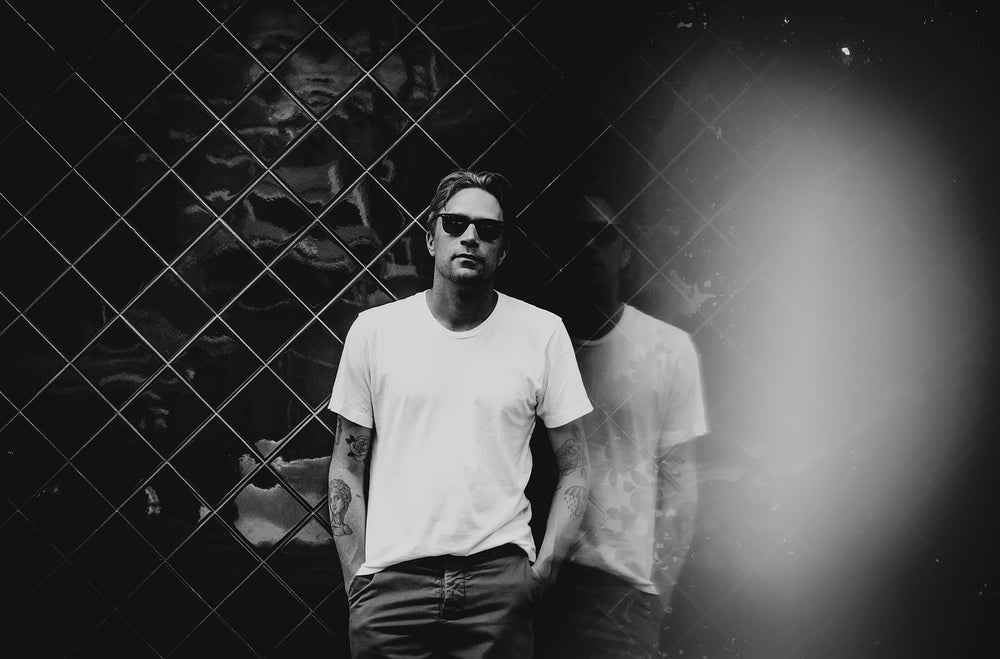“Out of the lack, I made my song.”
Henry Miller
Brian Roettinger is an artist primarily known for his graphic design. While most of us may have likely seen his work on some form of digital screen, Brian wants you to remember the object — the tangible — or more simply, the object. The physical object, the product of his creative efforts, finds its value for the consumer through creation in of itself and we, his audience, shouldn’t be so quick to lose sight of this. If at this point you’re wondering what the fuck I’m talking about, let me try to explain.


Process is central to Brian’s creations. He invests an incredible amount of thought into it. When viewing Brian’s work, you can’t help but feel as though each decision has been meticulously considered, and that’s because to a large extent it has. No steps in the process are skipped or corners cut while arriving at his design choices. It’s the idea that remains central. To support this, he’ll utilize structure and repetition to upend expectation. His approach can often appear minimal in presentation and at times be accused of austere simplicity. Visibly chaotic with meticulous organization always under the surface, he often favors the boldly simple duality of high contrast. Make no mistake when looking at the work: Brian respects the full weight of symbolism and evaluates his work rigorously for clarity of thought. This current is a constant throughout his works, no matter the medium.


Raised in Newhall, a neighborhood thirty short miles outside of the east Los Angeles neighborhood where Brian’s studio, HandHeldHeart, can now be found, Brian traces his earliest influences to his formative years spent skating. Pushing and slamming his way through the city streets, Brian found himself drawn into the local punk and hardcore scenes of Los Angeles. After time spent playing shows, on the road, and sleeping in vans, he found himself immersed in the life. Making records and merch was a process of constantly stretching limited resources. As he describes, “It was about finding what was available and making use.” Slowly, here, he honed his taste for aesthetics. It was a time he often consults for his work these days. Skating could be considered his gateway to the music scene, and it was music that amplified his aesthetic. If there is a common thread to be found, it might be the respect for process and the vigor for total involvement, just as you’d expect from a skater committed to sticking a landing. It’s visceral. His work, much like his life, places focus and value on doing and participating.
Brian never really set out to work with album packaging despite his lengthy relationship with music. If anything, he had contempt for the constraints and determinations of the industry standards and only really wanted to work on projects void of constraints. A medium, which on the surface appeared limited, offered a forum for a reaction to the proposed set of limitations themselves. There is an important idea here that shouldn’t be lost in the thronged bustle of our thoughts like a congested LA freeway. It’s only through a careful and meticulous assemblage of available resources and thorough understanding of the means of production that he could begin to challenge convention and start to evolve the medium.


In a relatively short period of time, Brian has racked up a seriously impressive roster of clients. Whether it’s Jay Z, Selena Gomez, Mark Ronson, or more homegrown and local projects with Andrew Bird, No Age, or Liars, they all come looking for Brian to focus his lens on their work and commit to his process. I mentioned earlier a traced line that you can see through Brian’s work. That line may be better described as a constant approach rather than any redundant sort of visual link. In an age of carbon copies, Brian stands out for his ability to transform our relationship to the digital file on your iPhone into something larger. He leaves us with an understanding of what we are diving into. His visual language is synchronistic, matching the intention of the artist he’s working with.
Most recently, his attention has been focused on the release of one of his latest works, Slash: A Punk Magazine From Los Angeles (1977-80). It’s comprised of absolute gems of never before seen photos, interviews, candids, and other lost artifacts of the first wave of punk in Los Angeles. Having endured the death of a scene that existed hard and fast only to give way in its passing to an increasingly major label dominated market, we should be grateful we have someone like Brian holding the keys to such a rich history. Brian reminds us, “The Los Angeles scene existed as grittier and grimier than its New York and London counterparts. History is too often written by the victors.”



